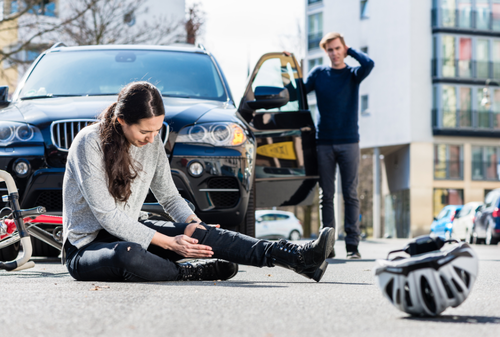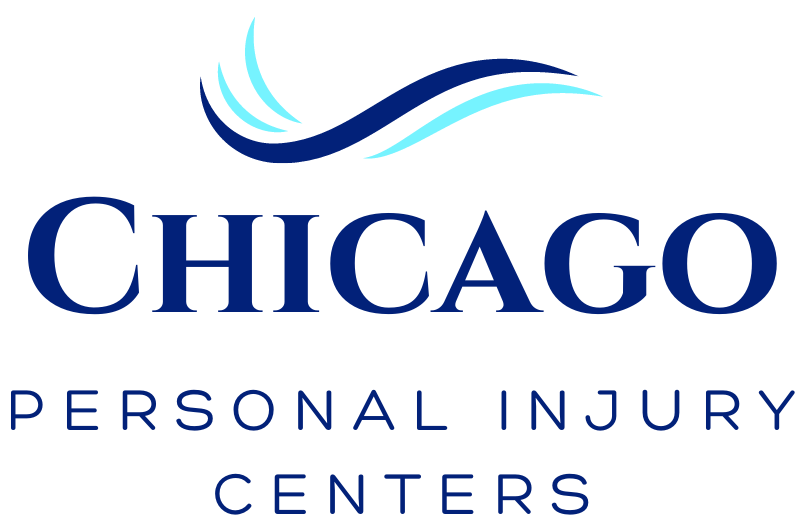In an era where health consciousness is on the rise and the need to combat obesity and discourage sedentary lifestyles, more and more people in Chicago are turning to cycling to move around while increasing their physical activity.
For all the good that cycling yields, it does have some unintended negative side effects, including bicycle-related accidents which have been on the rise in Chicago.
An undeniable fact of cycling is that the cyclist’s body is exposed to high impact in the event of an accident. As such, cyclists and other road users need to understand the common bicycle accident injuries that arise and how to treat the injuries for effective and full recovery.
This article will explore the most common injuries sustained in bicycle accidents and provide recovery tips and treatment options.
Common Bicycle Accident Injuries
Data collected show that on average, on average there are 1,400 bike crashes annually. It is more common than you would think and can result in life altering, and sometimes, life threatening injuries. Below are a few of the most common types of bicycle accident injuries:
Fractures and Broken Bones
While you may wear all of the protective gear recommended for cycling, your limbs are still exposed to the risk associated with falling. Cyclists are particularly vulnerable to impact injuries such as fractures and broken bones resulting from falling or being struck by motorists.
The impact of falling off your bike at moderate to high speeds is enough to break your bones. On the other hand, being struck by a vehicle, even at slow speeds, can fracture or break your bones.
Additionally, it’s important to note the variety of bones at risk if fractures and breakages are many and varied. They include femurs (thigh bones), collarbones, arms (the radius, ulna, and humerus), hip and pelvic bones, hands wrists, fingers, rib bones, and feet and ankles.
Head Injuries and Concussions
The risk of head injuries are concussions is extremely high for cyclists involved in a bicycle accident, even when wearing a helmet. Statistics indicate that 22% to 47% of all cyclists injured in accidents suffer head-related injuries, indicating how common head injuries are in bicycle accidents.
It is common for cyclists to suffer concussions, skull fractures, and traumatic brain injuries (TBIs) following a bicycle accident. In some cases, the head injury may conjure up worse conditions such as intracranial hematoma (blood clots near or in the brain), which is life-threatening.
With the above in mind, it’s imperative for cyclists involved in an accident to recognize the symptoms of head injuries and seek medical attention immediately.
Soft Tissue Injuries
Coming to an instantaneous stop for cyclists is among involves dissipating a lot of energy. With your muscles trying to brace for the fall and impact and to hold on, they’re stretched beyond their limits, causing soft tissue injuries such as strains, sprains, and in some extreme cases, muscle tears. Moreover, it is common for ligaments and tendons to be strained, torn, or sprained.
That’s why is common to experience enduring muscular pain and limited mobility following a bicycle accident. The limited flexibility caused by the injuries makes it difficult or impossible to perform daily activities or even ride your bicycle for a while.
Spinal Cord Injuries
Any cycling accident that involves high-energy impact has a risk of causing spinal injuries, resulting in nerve damage, fractured bones in the spinal code, and damaged disks. These injuries can permanently affect your strength, sensation, and body function leading to mobility issues, chronic pain, altered sexual function, breathing issues, and in some severe cases, paralysis.
Road Rash and Lacerations
There is a risk of suffering road rash, scrapes, and lacerations when you fall and slide on the road surface, even when well-covered and protected. With the rough road surface having bacteria and other pathogens in abundance and causing abrasion on your skin, it is essential to have these injuries dressed to avoid infections and long-term scarring.
Another common type of bicycle accident injuries are facial injuries. Falling off your bike especially when the rider is not wearing a helmet or at high speed can cause a broken or dislocated jaw, a broken nose, dental injuries, eye injuries or even fractured facial bones such as cheekbones and orbital fractures.
Immediate Steps to Take After a Bicycle Accident
If you are involved in a bicycle accident, try to remain calm, and follow the steps.
Step #1: Seek Immediate Medical Attention
Any high-impact accident requires immediate medical attention. You should note that some of the injuries do not show up immediately, while still being dire for your health and wellbeing.
Bicycle accident injuries need an immediate diagnosis of the true extent of their injuries, even if they seem minor. It’s essential to rule out a concussion and other internal injuries not apparent at a glance.
Step #2: Document Bicycle Accident Injuries and Accident Details
Aside from seeking immediate medical attention, you take the steps necessary to build a strong case for any compensation you may need in the future following the accident. To this end, document your bicycle accident injuries through photos and gather witness information to support any legal claims or insurance needs.
Step #3: Rest and Ice for Immediate Relief
Every bicycle accident results in a unique set of injuries. Your doctors will give you an individualized recovery plan that caters to your recovery needs. However, you should consider resting well and applying ice to reduce swelling and pain in the first 24-48 hours after the accident. Ice treatment will go a long way in helping reduce inflammation.
Recovery and Treatment Options for Bicycle Accident Injuries
Recovering from bicycle accident injuries requires a comprehensive approach, and understanding the available treatment options can help ensure a smoother and more effective healing process.
Fracture and Bone Injury Treatment
Fracture and bone injury treatment involves immobilizing the affected bones using a plaster cast or surgically inserted metal rods. In some extreme cases, bone fractures require surgery and surgical traction to heal well.
Once the bone fuses and fractures heal, you’ll need physical therapy to regain mobility, flexibility, strength, and some dexterity. Physical therapy is an essential part of recovering from fractures.
Physical Therapy for Soft Tissue and Muscle Injuries
At a glance, it might seem like soft tissue injuries are an inconsequential medical injury. However, if left untreated, the injuries can exacerbate and turn into chronic pain issues and prolong limited mobility. Moreover, these injuries can form trigger point areas affecting your quality of life.
Physical therapy helps break up these tense areas, helping patients regain strength and flexibility, and reducing pain. Depending on a patient’s injuries, a combination of stretching, tissue mobilization, hold-relax exercises, myofascial release, massage, heat therapy, cold therapy, and electrotherapy can alleviate the pain and restore normal muscular function.
Concussion and Head Injury Rehabilitation
Recovering from a concussion or other head injuries involves resting and monitoring symptoms. The main goal is to allow the brain to heal. However, in some cases, physical therapy is necessary to regain full function of one’s motor skills. In such cases, we recommend undertaking cognitive therapy that helps you recover and relearn skills lots due to the head injury.
Wound Care for Road Rash and Lacerations
Caring for lacerations and road rashes involves cleaning the wound and surrounding areas with antibacterial soap, dressing the wound, and monitoring for signs of infection. Additionally, you want to apply lotion on the skin around the injured area to help the skin heal well and reduce the formation of scars.
Preventing Future Bicycle Accident Injuries
It’s always better to prevent any bicycle accident injuries from occurring. As the age-old adage notes.“ Prevention is better than cure.” Here are some of the things you can do to protect yourself while cycling on the streets of Chicago, or anywhere.
Use of Protective Gear
Always wear personal protective gear including your helmet, padded gloves, and knee/elbow pads. Importantly, ensure the personal protective gear fits well.
Safe Cycling Habits
Your behavior on the road can also increase or decrease your risk exposure. You should adopt safe cycling habits that reduce or eliminate the risk of accidents. Obey traffic laws, avoid distracted riding, and use hand signals to indicate your movement to other road users.
Regular Bike Maintenance
Another way you can reduce the risk of accidents is by keeping your bicycle well-maintained. Check your bike’s brakes, tires, and chains regularly to prevent mechanical failures.
Chicago Personal Injury Centers Will You Achieve a Full Recovery From Your Bicycle Accident Injuries
With bike usage on the rise, there is a risk of bike accidents increasing. Cyclists should learn about common injuries that arise from bike accidents. The most common injuries that occur in bicycle accidents include fractures, head injuries, and soft tissue damage.
That being said, if you’ve suffered bike accident injuries, then you should seek proper treatment to ensure full and speedy recovery.
Call us at (773) 482-5800 today for all of your physical therapy and treatment needs following a bicycle accident. Start your journey of recovery at Chicago Personal Injury Centers. Walk-ins are always welcome.


